1mg
Showing 1–50 of 582 results
-

(S)-ATPA
$659.12 Add to cart View Product Details(S)-ATPA
-

2-(Phosphonomethyl)-pentanedioic Acid
$423.06 Add to cart View Product Details2-(Phosphonomethyl)-pentanedioic Acid
-
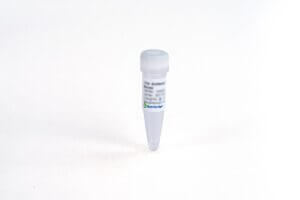
25-OH VD2&D3 (2E16), mAb, Mouse
$450.23 Add to cart View Product DetailsVitamin D plays an important role in calcium homeostasis and metabolism. Vitamin D3 and vitamin D2 are two forms of vitamin D in human body, both of which are contained in only a few foods. The deficiency of vitamin D in human body can cause a threat of diseases such as osteomalacia, rickets and diabetes. 25-OH Vitamin D2 and 25-OH Vitamin D3 as vitamin D metabolites are measured in human serum to evaluate vitamin D level. Vitamin D supplements are considered as an effective way to treat or to prevent the diseases.
-

25-OH VD2&D3 (D23HC)
$450.23 Add to cart View Product DetailsVitamin D plays an important role in calcium homeostasis and metabolism. Vitamin D3 and vitamin D2 are two forms of vitamin D in human body, both of which are contained in only a few foods. The deficiency of vitamin D in human body can cause a threat of diseases such as osteomalacia, rickets and diabetes. 25-OH Vitamin D2 and 25-OH Vitamin D3 as vitamin D metabolites are measured in human serum to evaluate vitamin D level. Vitamin D supplements are considered as an effective way to treat or to prevent the diseases.
-

25-OH VD3 (32F9C4), mAb, Mouse
$450.23 Add to cart View Product DetailsVitamin D plays an important role in calcium homeostasis and metabolism. Vitamin D3 and vitamin D2 are two forms of vitamin D in human body, both of which only a few foods contain. The deficiency of vitamin D in human body can cause a threat of diseases such as osteomalacia, rickets and diabetes. 25-OH Vitamin D2 and 25-OH Vitamin D3 as vitamin D metabolites are measured in human serum to evaluate vitamin D level. Vitamin D supplements are considered as an effective way to treat or to prevent the diseases.
-

25-OH Vitamin D3, BSA Conjugated
$450.23 Add to cart View Product DetailsVitamin D plays an important role in calcium homeostasis and metabolism. Vitamin D3 and vitamin D2 are two forms of vitamin D in human body, both of which only a few foods contain. The deficiency of vitamin D in human body can cause a threat of diseases such as osteomalacia, rickets and diabetes. 25-OH Vitamin D2 and 25-OH Vitamin D3 as vitamin D metabolites are measured in human serum to evaluate vitamin D level. Vitamin D supplements are considered as an effective way to treat or to prevent the diseases.
-

25-OH Vitamin D3, HRP Conjugated
$450.23 Add to cart View Product DetailsVitamin D plays an important role in calcium homeostasis and metabolism. Vitamin D3 and vitamin D2 are two forms of vitamin D in human body, both of which only a few foods contain. The deficiency of vitamin D in human body can cause a threat of diseases such as osteomalacia, rickets and diabetes. 25-OH Vitamin D2 and 25-OH Vitamin D3 as vitamin D metabolites are measured in human serum to evaluate vitamin D level. Vitamin D supplements are considered as an effective way to treat or to prevent the diseases.
-

2B4/CD244 Fc Chimera, Human
$1,035.00 Add to cart View Product DetailsCD244 (Cluster of Differentiation 244) is a human protein encoded by the CD244 gene. It is also known as Natural Killer Cell Receptor 2B4. This gene encodes a cell surface receptor expressed on natural killer cells (NK cells) (and some T cells) mediating non-major histocompatibility complex (MHC) restricted killing. The interaction between NK-cell and target cells via this receptor is thought to modulate NK-cell cytolytic activity. Alternatively spliced transcript variants encoding different isoforms have been found for this gene. CD244 can also be expressed on non-lymphocytes such as eosinophils, mast cells and dendritic cells.
-
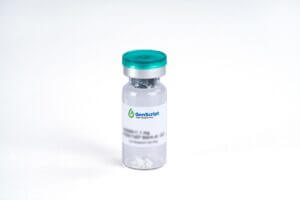
4-1BB (CD137) Fc Chimera, Human
$1,035.00 Add to cart View Product Details4-1BB(CD137) is a member of the tumor necrosis factor (TNF) receptor family. Mature human 4-1BB consists of a 163 amino acid extracellular domain (ECD) with four TNFR cysteine‑rich repeats, a 27 aa transmembrane segment, and a 42 aa cytoplasmic domain; 4-1BB (CD137) is expressed as a disulfide-linked homodimer on various populations of activated T cell including CD4+, CD8+, memory CD8+, NKT, and regulatory T cells as well as on myeloid and mast cell progenitors, dendritic cells, mast cells, and bacterially infected osteoblasts. It binds with high affinity to the transmembrane 4-1BB Ligand/TNFSF9 which is expressed on antigen presenting cells and myeloid progenitor cells. This interaction co stimulates the proliferation, activation, and/or survival of the 4-1BB expressing cell. It can also enhance the activation-induced cell death of repetitively stimulated T cells.
-

4-1BBL/TNFSF9, His, Human
$1,811.25 Add to cart View Product DetailsTumor necrosis factor ligand superfamily member 9(4-1BBL) is single-pass type II membrane protein which is a member of the the tumor necrosis factor family. 4 1BBL is a 254 amino acids cytokine that is expressed in brain, placenta, lung, skeletal muscle and kidney. TNFSF9 has been shown to reactivate anergic T lymphocytes in addition to promoting T lymphocyte proliferation. This cytokine may have a role in activation-induced cell death (AICD) and cognate interactions between T-cells and B-cells/macrophages. It has also been shown to be required for the optimal CD8 responses in CD8 T cells, and is thought to be involved in T cell-tumor cell interaction.
-

AAV2 Antibody (12C10), mAb, Mouse
$3,204.19 Add to cart View Product DetailsThe product is specific for AAV2 capsids VP1, VP2 and VP3.
-

ACE-2 Fc Chimera, Human (CHO-expressed)
$1,811.25 Add to cart View Product DetailsAngiotensin-Converting Enzyme 2 (ACE-2) is an integral membrane protein and a zinc metalloprotease of the ACE family. The ACE family includes somatic and germinal ACE. ACE-2 cleaves angiotensins I and II as a carboxypeptidase. ACE-2 converts angiotensin I to angiotensin 1-9, and angiotensin II to angiotensin 1-7. ACE 2 is also able to hydrolyze apelin-13 and dynorphin-13 with high efficiency. It has high binding affinity to S-RBD.
-

Adiponectin, Human(CHO-expressed)
$2,018.25 Add to cart View Product DetailsAdiponectin is an important adipokine involved in the control of fat metabolism and insulin sensitivity. It is synthesized exclusively by adipocytes and secreted into plasma. It antagonizes THF-alpha by negatively regulating its expression. It also inhibits endothelial NF-kappa-B signaling through a cAMP-dependent pathway. Adiponectin can form low molecular weight complexes (LMW), middle molecular weight complexes (MMW) and higher molecular weight complexes (HMW). These bind to various growth factors, such as HBEGF, PDGFB and FGF2, and play a role in cell growth, angiogenesis and tissue remodeling.
-

Adiponectin, Mouse
$2,018.25 Add to cart View Product DetailsAdiponectin is a hormone mainly produced by adipocytes. Adiponectin forms a homotrimer and exists as higher order multimers in vivo. The receptors of Adiponectin are seven transmembrane G protein coupled receptors: Receptor 1 is expressed in skeletal muscle and Receptor 2 in liver. Adiponectin receives a lot of attention because of its anti-diabetic, anti-atherosclerotic, and anti-inflammatory properties. Adiponectin increases the expression of molecules involved in fatty acid transport, combustion of fatty acid, and energy dissipation, and increases insulin sensitivity of the body. Decreased levels of Adiponectin are associated with hypertension, cardiovascular diseases, and metabolic syndromes. Therefore, Adiponectin has promising potential as a pharmacological agent.
-

Adiponectin/Acrp30, Human
$2,018.25 Add to cart View Product DetailsAdiponectin is an important adipokine involved in the control of fat metabolism and insulin sensitivity. It is synthesized exclusively by adipocytes and secreted into plasma. It antagonizes THF-alpha by negatively regulating its expression. It also inhibits endothelial NF-kappa-B signaling through a cAMP-dependent pathway. Adiponectin can form low molecular weight complexes (LMW), middle molecular weight complexes (MMW) and higher molecular weight complexes (HMW). These bind to various growth factors, such as HBEGF, PDGFB and FGF2, and play a role in cell growth, angiogenesis and tissue remodeling.
-

AFP (RC6A), mAb, Mouse
$104.36 Add to cart View Product DetailsAlpha-Fetoprotein (AFP) is a glycoprotein, normally produced during fetal development by the hepatocytes. Its level is increased in pregnant women. AFP is an important marker for the diagnosis of hepatocellular carcinoma.
-

AFP (RC6B), mAb, Mouse
$104.36 Add to cart View Product DetailsAlpha-Fetoprotein (AFP) is a glycoprotein, normally produced during fetal development by the hepatocytes. Its level is increased in pregnant women. AFP is an important marker for the diagnosis of hepatocellular carcinoma.
-

AITRL, Mouse
$2,018.25 Add to cart View Product DetailsActivation-Inducible TNF-Related Ligand (AITRL), also known as Glucocorticoid-Induced TNF-Related Ligand (GITRL), belongs to the tumor necrosis factor superfamily (TNFSF). AITRL is a Type II single transmembrane protein and shares low conservation within the extracellular domain with other TNFSF members. AITRL is expressed on macrophages, immature and mature dendritic cells and B cells. Its receptor, Activation-Inducible TNFR family Receptor (AITR), is expressed on T lymphocytes, natural killer (NK) cells, and antigen- presenting cells. After binding by AITRL, AITR can be released. AITR activation increases resistance to tumors and viral infections and is involved in autoimmune and inflammatory processes. In addition, activated AITR increases TCR-induced T cell proliferation and cytokine production and rescues T cells and NK cells from apoptosis.
-

ALK (4A4), mAb, Mouse
$1,509.38 Add to cart View Product DetailsAnaplastic lymphoma kinase (ALK) known as ALK tyrosine kinase receptor or CD246, is a tyrosine kinase receptor. ALK is an important biomarker for diagnosis of non-small cell lung cancer (NSCLC). Zykadia (Ceritinib) has been permitted for treating patent with ALK-Positive NSCLC.
-

Anti-Human IgG Fc (50D4), mAb, Mouse
$76.40 Add to cart View Product DetailsImmunoglobulin G (IgG) is a type of antibody with two antigen binding sites. IgG contains two identical heavy chains and two identical light chains. It constitutes 75% of serum immunoglobulins in humans. IgG is further subdivided into 4 subclasses: IgG1, IgG2, IgG3, and IgG4.
-

Anti-Human IgM mu Chain (M3HC)
$63.83 Add to cart View Product DetailsHuman IgM is an abundant human immunoglobulin in plasma. It exists as pentamer with molecular weight of about 900 kDa, or as hexamer with molecular weight of about 1050 kDa. The mu heavy chain of IgM includes four distinct constant region domains. Testing for IgM-class antibodies is useful in the diagnosis of infection.
-

Anti-Müllerian hormone (AMH) Antibody (38C9), mAb, Mouse
$261.34 Add to cart View Product DetailsAnti-Müllerian hormone (AMH) is a glycoprotein dimer. It is a member of the transforming growth factor-β superfamily. AMH is a hormone produced by small follicles in the ovary. It is a novel fertility marker to assess ovarian reserve levels.
-

Anti-Müllerian hormone (AMH) Antibody (39D7), mAb, Mouse
$261.34 Add to cart View Product DetailsAnti-Müllerian hormone (AMH) is a glycoprotein dimer. It is a member of the transforming growth factor-β superfamily. AMH is a hormone produced by small follicles in the ovary. It is a novel fertility marker to assess ovarian reserve levels.
-
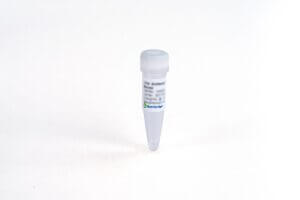
Anti-Müllerian hormone (AMH) Antibody (A10C27), mAb, Mouse
$265.65 Add to cart View Product DetailsAnti-Müllerian hormone (AMH) is a glycoprotein dimer. It is a member of the transforming growth factor-β superfamily. AMH is a hormone produced by small follicles in the ovary. It is a novel fertility marker to assess ovarian reserve levels.
-
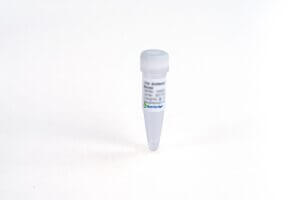
Anti-Müllerian hormone (AMH) Antibody (A9C27), mAb, Mouse
$265.65 Add to cart View Product DetailsAnti-Müllerian hormone (AMH) is a glycoprotein dimer. It is a member of the transforming growth factor-β superfamily. AMH is a hormone produced by small follicles in the ovary. It is a novel fertility marker to assess ovarian reserve levels.
-

April, Mouse
$1,177.31 Add to cart View Product DetailsA Proliferation-inducing Ligand (April)) also known as TNSF13A, Tall-2, and TRDL-1, is a member of the TNF ligand (TNFL) superfamily. April is most similar to B-cell activation factor (BAFF) with which it shares 30% sequence identity, compete for two receptors, TACI and BCMA. APRIL is expressed at low levels in lymphoid tissue and is over-expressed by a number of tumors. April has a proliferative effect on both normal and tumor cell lines in vitro and in vivo. APRIL seems to be involved in the regulation of death and proliferation of tumor cells, but there are still contradictory findings regarding its overall biological effects.
-

B7-1(CD80) Fc Chimera, Human
$1,035.00 Add to cart View Product DetailsB7-1/CD80 and B7-2/CD86, together with their receptors CD28 and CTLA-4, constitute one of the dominant co-stimulatory pathways that regulate T- and B-cell responses. Although both CTLA-4 and CD28 can bind to the same ligands, CTLA-4 binds to B7-1 and B7-2 with a 20-100 fold higher affinity than CD28 and is involved in the down-regulation of the immune response. Mature human B7-1 consists of a 208 amino acid extracellular domain (ECD) with two immunoglobulin-like domains, a 21 amino acid transmembrane domain, and a 25 amino acid cytoplasmic domain. Both human and mouse B7-1 and B7-2 can bind to either human or mouse CD28 and sCTLA-4. B7-1 is expressed on activated B cells, activated T cells, and macrophages. B7-2 is constitutively expressed on interdigitating dendritic cells, Langerhans cells, peripheral blood dendritic cells, memory B cells, and germinal center B cells.
-
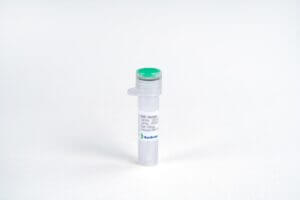
B7-2/CD86 Fc Chimera, Human
$1,035.00 Add to cart View Product DetailsB7-1 and B7-2 are homologous costimulatory ligands expressed on the surface of antigen presenting cells (APCs), both are type 1 transmembrane proteins with a membrane distal IgV and a membrane proximal IgC domain. They share ~25% sequence homology and interact with the same receptors, CD28 and CTLA-4.Binding of these molecules to the T cell costimulatory receptors, CD28 and CTLA-4, is essential for the activation and regulation of T cell immunity. T cell activation requires engagement of the T cell receptor (TCR) with the peptide–MHC complex presented on the cell surface of antigen presenting cells (APCs). In addition to this antigen-specific interaction, a second interaction involving costimulatory receptors (CD28, ICOS) on T cells and their respective ligands (B7-1/B7-2, ICOS-L) on APCs is required for optimal T cell activation. B7-1 and B7-2 may also function to deliver signal into dendritic cells. While B7-1 favors binding to CTLA-4, B7-2 shows a preference for CD28.
-

B7-H3 Fc Chimera, Human
$1,035.00 Add to cart View Product DetailsHuman B7 homolog 3 (B7-H3), a member of the immunoglobulin superfamily, is also known CD276, which contains two Ig-like C2-type (immunoglobulin-like) domains and two Ig-like V-type (immunoglobulin-like) domains. B7-H3 may participate in the regulation of T-cell-mediated immune response. B7-H3 also plays a protective role in tumor cells by inhibiting natural-killer mediated cell lysis as well as a role of marker for detection of neuroblastoma cells. Furthermore, B7-H3 is involved in the development of acute and chronic transplant rejection and in the regulation of lymphocytic activity at mucosal surfaces. Human B7-H3 does not bind any known members of the CD28 family of immunoreceptor. However, B7-H3 has been shown to bind an unidentified counter-receptor on activated T cells to co-stimulate the proliferation of CD4+ or CD8+ T cells. B7-H3 has also been found to enhance the induction of primary cytotoxic T lymphocytes and stimulate IFN-gamma production.
-

B7-H3, His, Human
$1,293.75 Add to cart View Product DetailsHuman B7 homolog 3 (B7-H3), a member of the immunoglobulin superfamily, is also known CD276, which contains two Ig-like C2-type (immunoglobulin-like) domains and two Ig-like V-type (immunoglobulin-like) domains. B7-H3 may participate in the regulation of T-cell-mediated immune response. B7-H3 also plays a protective role in tumor cells by inhibiting natural-killer mediated cell lysis as well as a role of marker for detection of neuroblastoma cells. Furthermore, B7-H3 is involved in the development of acute and chronic transplant rejection and in the regulation of lymphocytic activity at mucosal surfaces. Human B7-H3 does not bind any known members of the CD28 family of immunoreceptor. However, B7-H3 has been shown to bind an unidentified counter-receptor on activated T cells to costimulate the proliferation of CD4+ or CD8+ T cells. B7-H3 has also been found to enhance the induction of primary cytotoxic T lymphocytes and stimulate IFN-gamma production.
-

BAFF-R, Human
$1,086.75 Add to cart View Product DetailsBAFF Receptor (BAFF-R), a member of the TNFR superfamily, is highly expressed in spleen, lymph node, and resting B cells and to some extent in activated B cells, resting CD4+ cells and peripheral blood leukocytes. BAFF-R is a type III transmembrane protein that binds with high specificity to BAFF (TNFSF13B). BAFF-R/BAFF signaling plays a critical role in B cell survival and maturation.
-

BAFF, Human
$1,651.69 Add to cart View Product DetailsB-cell activating factor, also known as BAFF, TALL-1, TNAK, and zTNF4, is a member of theTNF ligand superfamily designated TNFSF13B. Produced by macrophages, dendritic cells, and T lymphocytes, BAFF promotes the survival of B cells and is essential for B cell maturation. BAFF binds to three TNF receptor superfamily members: B-cell maturation antigen (BCMA/TNFRSF17), transmembrane activator and calcium-modulator and cyclophilin ligand interactor (TACI/TNFRSF13B) and BAFF receptor (BAFF R/BR3/TNFRSF 13C). These receptors are type III transmembrane proteins lacking a signal peptide. Whereas TACI and BCMA bind BAFF and another TNF superfamily ligand, APRIL(a proliferation-inducing ligand), BAFF R selectively binds BAFF. The BAFF R extracellular domain lacks the TNF receptor canonical cysteine-rich domain (CRD) and contains only a partial CRD with four cysteine residues. Human and mouse BAFF R share 56% aa sequence identity. BAFF R is highly expressed in spleen, lymph node and resting B cells. It is also expressed at lower levels in activated B cell, resting CD4+ T cells, thymus and peripheral blood leukocytes.
-

BCA-1/CXCL13, Human
$2,018.25 Add to cart View Product DetailsCXCL13, also known as B-lymphocyte chemoattractant (BLC), is a CXC chemokine that is constitutively expressed in secondary lymphoid organs. BCA-1 cDNA encodes a protein of 109 amino acid residues with a leader sequence of 22 residues. Mature human BCA-1 shares 64% amino acid sequence similarity with the mouse protein and 23 – 34% amino acid sequence identity with other known CXC chemokines. Recombinant or chemically synthesized BCA-1 is a potent chemoattractant for B lymphocytes but not T lymphocytes, monocytes or neutrophils. BLR1, a G protein-coupled receptor originally isolated from Burkitt’s lymphoma cells, has now been shown to be the specific receptor for BCA-1. Among cells of the hematopoietic lineages, the expression of BLR1, now designated CXCR5, is restricted to B lymphocytes and a subpopulation of T helper memory cells. Mice lacking BLR1 have been shown to lack inguinal lymph nodes. These mice were also found to have impaired development of Peyer’s patches and defective formation of primary follicles and germinal centers in the spleen as a result of the inability of B lymphocytes to migrate into B cell areas.
-

BCMA, Human
$3,458.63 Add to cart View Product DetailsBCMA, a member of the TNF receptor superfamily, binds to BAFF and APRIL. BCMA is expressed on mature B-cells and other B-cell lines and plays an important role in B cell development, function and regulation. BCMA also has the capability to activate NF-kappaB and JNK. The human BCMA gene codes for a 184 amino acid type I transmembrane protein, which contains a 54 amino acid extracellular domain, a 23 amino acid transmembrane domain, and a 107 amino acid extracellular domain.
-

BD-1, Human
$2,238.19 Add to cart View Product DetailsDefensins (alpha and beta) are cationic peptides with a broad spectrum of antimicrobial activity that comprise an important arm of the innate immune system. The α-defensins are distinguished from the β-defensins by the pairing of their three disulfide bonds. To date, four human β-defensins have been identified; BD-1, BD-2, BD-3 and BD-4. β-defensins are expressed on some leukocytes and at epithelial surfaces. In addition to their direct antimicrobial activities, they are chemoattractant towards immature dendritic cells and memory T cells. The β-defensin proteins are expressed as the C-terminal portion of precursors and are released by proteolytic cleavage of a signal sequence and, in the case of BD-1 (36 a.a.), a propeptide region. β-defensins contain a six-cysteine motif that forms three intra-molecular disulfide bonds. β-Defensins are 3-5 kDa peptides ranging in size from 33-47 amino acid residues.
-

BD-2, Human
$2,018.25 Add to cart View Product DetailsDefensins (alpha and beta) are cationic peptides with a broad spectrum of antimicrobial activity that comprise an important arm of the innate immune system. The α-defensins are distinguished from the β-defensins by the pairing of their three disulfide bonds. To date, four human β-defensins have been identified; BD-1, BD-2, BD-3 and BD-4. β-defensins are expressed on some leukocytes and at epithelial surfaces. In addition to their direct antimicrobial activities, they are chemoattractant towards immature dendritic cells and memory T cells. The β-defensin proteins are expressed as the C-terminal portion of precursors and are released by proteolytic cleavage of a signal sequence and, in the case of BD-1 (36 a.a.), a propeptide region. β-defensins contain a six-cysteine motif that forms three intra-molecular disulfide bonds. β-Defensins are 3-5 kDa peptides ranging in size from 33-47 amino acid residues.
-

BD-3, Human
$2,190.75 Add to cart View Product DetailsDefensins (alpha and beta) are cationic peptides with a broad spectrum of antimicrobial activity that comprise an important arm of the innate immune system. The α-defensins are distinguished from the β-defensins by the pairing of their three disulfide bonds. To date, four human β-defensins have been identified; BD-1, BD-2, BD-3 and BD-4. β-defensins are expressed on some leukocytes and at epithelial surfaces. In addition to their direct antimicrobial activities, they are chemoattractant towards immature dendritic cells and memory T cells. The β-defensin proteins are expressed as the C-terminal portion of precursors and are released by proteolytic cleavage of a signal sequence and, in the case of BD-1 (36 a.a.), a propeptide region. β-defensins contain a six-cysteine motif that forms three intra-molecular disulfide bonds. β-Defensins are 3-5 kDa peptides ranging in size from 33-47 amino acid residues.
-

Beta-amyloid (1-40) Antibody (A40), mAb, Mouse
$382.95 Add to cart View Product DetailsBeta-amyloid (1-40) Antibody (A40), mAb, Mouse
-

Beta-amyloid (1-42) Antibody (25G13), mAb, Mouse
$382.95 Add to cart View Product DetailsBeta-amyloid (1-42) Antibody (25G13), mAb, Mouse
-

Beta-amyloid (1-42) Antibody (6E8), mAb, Mouse
$382.95 Add to cart View Product DetailsBeta-amyloid (1-42) Antibody (6E8), mAb, Mouse
-

Betacellulin, Human
$1,323.94 Add to cart View Product DetailsBetacellulin (BTC) is a member of the EGF family of growth factors that also includes EGF, TGF-α, Amphiregulin, HB-EGF, Epiregulin, Tomoregulin, Heregulin and Neuregulins. Mature human BTC protein exhibits 80% amino acidsimilarity with mouse BTC protein. BTC is expressed in most tissues including kidney, uterus, liver and pancreas. It is also present in body fluids, including serum, milk, and colostrum. It is synthesized primarily as a transmembrane precursor, which is then processed to a mature molecule by proteolytic events. BTC signals through the EGF receptor.
-

Betacellulin, Mouse(HEK 293-expressed)
$1,073.81 Add to cart View Product DetailsBetacellulin (BTC) is a member of the EGF family of growth factors that also includes EGF, TGF-α, Amphiregulin, HB-EGF, Epiregulin, Tomoregulin, Heregulin and Neuregulins. Mature human BTC protein exhibits 80% amino acidsimilarity with mouse BTC protein. BTC is expressed in most tissues including kidney, uterus, liver and pancreas. It is also present in body fluids, including serum, milk, and colostrum. It is synthesized primarily as a transmembrane precursor, which is then processed to a mature molecule by proteolytic events. BTC signals through the EGF receptor.
-
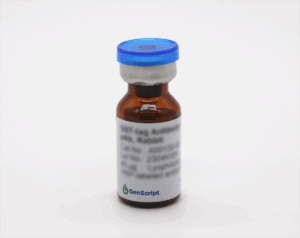
Biotin-Protein L
$89.70 Add to cart View Product DetailsProtein L is a cell surface protein from Peptostreptoccocus magnus that binds to the variable light chains (kappa chain) of immunoglobulins without interfering with antigen binding. In contrast to IgG-binding proteins, such as protein A and protein G, protein L can be used for the detection and purification of mammalian kappa light chain antibodies of all classes. Biotin-Protein L, which is produced by covalently linking biotin to protein L, can be used in immunodetections, such as immunoblotting (western or dot blot), ELISA, and immunohistochemistry.
-

BMP-2, Human
$1,569.75 Add to cart View Product DetailsHuman Bone Morphogenetic Protein-2 (BMP-2) is a bone-growth regulatory factor and belongs to the transforming growth factor-beta (TGF-beta) superfamily. Human Bone Morphogenetic Protein-2 (BMP-2) is synthesized as large precursor molecule (Met1-Arg396, with a signal peptide from Met1 to Gly23), propeptide (Leu24-Arg282) of which is cleaved by PCSK5 (Proprotein Convertase Subtilisin/Kexin type 5). The active form consists of a dimer of two identical proteins which are linked by a disulfide bond at Cys360. It plays an important role in the development of bone and cartilage, cardiac cell differentiation and epithelial to mesenchymal transition. It is also involved in the hedgehog pathway, TGF-beta signaling pathway, and in cytokine-cytokine receptor interaction.
-

BMP-4, Human
$2,596.13 Add to cart View Product DetailsHuman BMP-4 is one of at least 15 structurally and functionally related BMPs, which are members of the transforming growth factor β (TGF-β) superfamily. BMPs were originally identified as protein regulators of cartilage and bone formation. However, they havesince been shown to be involved in embryogenesis and morphogenesis of various tissues and organs. BMPs have also been shown to regulate the growth, differentiation, chemotaxis and apoptosis of various cell types, including mesenchymal cells, epithelial cells, hematopoietic cells and neuronal cells. BMP-4 is synthesized as large precursor molecules which are cleaved by proteolytic enzymes. The active form can consist of a dimer of two identical proteins or a heterodimer of two related bone morphogenetic proteins.
-

BMP-7, Human
$5,037.00 Add to cart View Product DetailsHuman BMP-7 is one of at least 15 structurally and functionally related BMPs, which are members of the transforming growth factor β (TGF-β) superfamily. BMPs were originally identified as protein regulators of cartilage and bone formation. However, they havesince been shown to be involved in embryogenesis and morphogenesis of various tissues and organs. BMPs have also been shown to regulate the growth, differentiation, chemotaxis and apoptosis of various cell types, including mesenchymal cells, epithelial cells, hematopoietic cells and neuronal cells. BMP-7 is synthesized as large precursor molecules which are cleaved by proteolytic enzymes. The active form can consist of a dimer of two identical proteins or a heterodimer of two related bone morphogenetic proteins.
-

BNP (13C1), mAb, Mouse
$196.65 Add to cart View Product DetailsBNP and NT-proBNP are separated from precursor molecule proBNP via proteolytic processing. The BNP and NT-proBNP level in blood are proportional to the severity of cardiac dysfunction. It can be used for diagnosis of congestive heart failure (CHF).
-

BNP (14D5), mAb, Mouse
$196.65 Add to cart View Product DetailsBNP and NT-proBNP are separated from precursor molecule proBNP via proteolytic processing. The BNP and NT-proBNP level in blood are proportional to the severity of cardiac dysfunction. It can be used for diagnosis of congestive heart failure (CHF).
-

BNP (60C5), mAb, Mouse
$196.65 Add to cart View Product DetailsBNP and NT-proBNP are separated from precursor molecule proBNP via proteolytic processing. The BNP and NT-proBNP level in blood are proportional to the severity of cardiac dysfunction. It can be used for diagnosis of congestive heart failure (CHF).
-

BNP, Human
$3,458.63 Add to cart View Product DetailsNatriuretic Peptide Precursor B acts as a cardiac hormone with a variety of biological actions including natriuresis, diuresis, vasorelaxation, and inhibition of renin and aldosterone secretion. It is thought to play a key role in cardiovascular homeostasis. Helps restore the body’s salt and water balance. Improves heart function.






